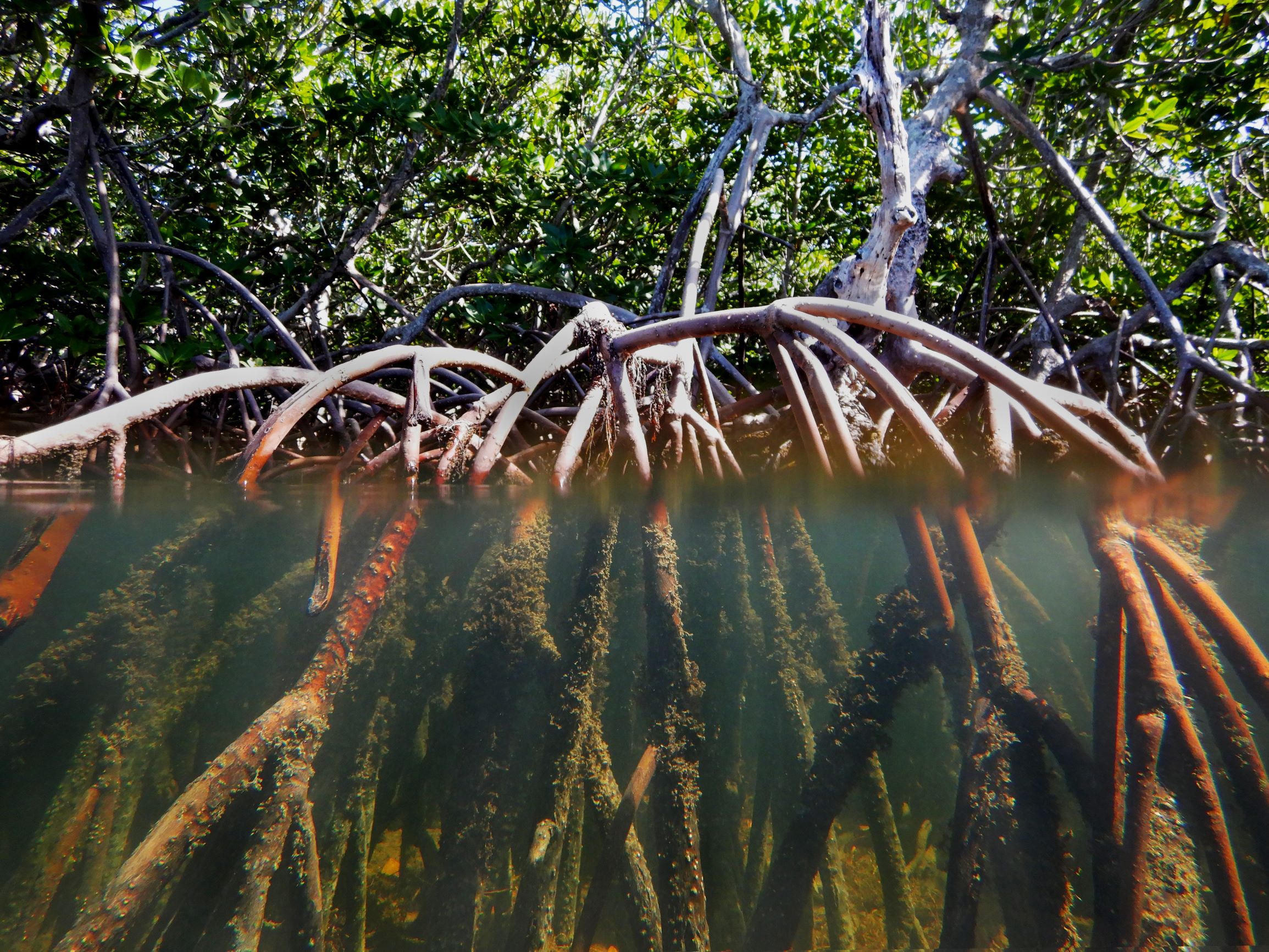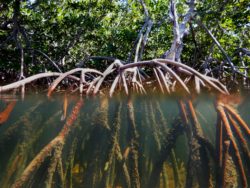
Mangrove Forests 101
When you think of a forest, your first thought might not be one that is located along a warm, salty shoreline. But mangrove forests, composed of mangrove trees are just that! They live only in warm, subtropical and tropical areas where salt and freshwater meet. On the Atlantic coast, mangroves grow from Florida, throughout the Caribbean and down to Argentina in South America. Worldwide, there are about 80 species of mangrove trees.
Mangrove trees, adapted to live near the water or in coastal intertidal zones, are able to metabolize saltwater (which would kill other kinds of plants) and provide incredible ecosystem services to animal and human societies. Their complex, tangled root systems are tall and dense, allowing the trees to withstand daily tidal changes and can even slow the rate of water movement. These root structures provide shelter for newly hatched fish and other juvenile animals. Their roots and shrubbery also make them resilient against winds and storm surges, earning them a nickname of coastline defenders.
The ecosystem services provided by mangrove forests include:
Water quality improvement: Mangrove forests can filter and remove pollutants and sediments from the water that come from land before reaching the ocean. Improved water quality benefits both the species that live near mangrove forests and the people who use those waters for recreation or commerce.
Habitat for animals: Mangrove roots are popular shelter for fish and other animals to hide from predators or graze. Valuable species that humans fish for recreation and industry often start their lives in mangrove root nurseries before they travel out into open waters. These species include shrimp, fish like snapper, goliath grouper and red drum, and crabs. Mangrove forests also support predator populations including birds, mammals, and reptiles who are lucky or well adapted enough to grab a morsel from between the mangrove roots. The life mangrove forests support also help attract tourism activity like kayaking and birding, supporting local economies.
Raw materials: In places like Florida, mangrove trees are protected from removal. However, mangrove wood is useful to coastal and indigenous communities elsewhere due to its durability and resistance to rot and insects. Mangroves provide these communities with fuel for fire, medicines, tannins, and wood for building homes and boats.
Carbon storage: Mangroves are incredibly effective at storing carbon from the environment in their leaves, trunks, and soil through chemical processes related to photosynthesis and growth. Carbon storage in marine plants is known as “blue carbon” and is a strategy scientists and policy experts believe can help mitigate atmospheric carbon that leads to human-caused climate change.
Coastline protection: When mangrove forests are fully developed and left in-tact, they can stabilize the coastline from erosion, storm surges associated with hurricanes, flood, wind, and waves. This results in the protection of housing and infrastructure along the coastline.

You can find more than 1,800 miles of shoreline lined by mangroves in the Florida Keys National Marine Sanctuary! As important as mangroves are to the well-being of coastal communities around the world, their populations are at risk. Habitat destruction, water pollution, coastal development, and climate change are all growing threats to these unique trees. Human development are some of the biggest threats to mangrove communities including activities such as dredging, use of herbicides, and boating which can damage habitats with the boat’s propellers. If they are destroyed, the carbon they store is released into the atmosphere and can contribute to carbon emissions related to climate change. Mangroves trees are unusual, ecological valuable, and worth celebrating and protecting!

